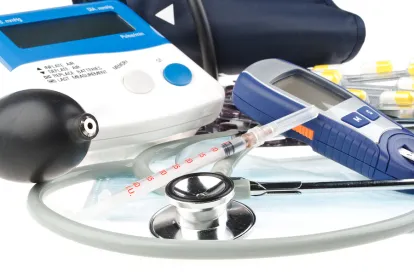On December 15, the U.S. Food & Drug Administration (FDA) issued “The Least Burdensome Provisions: Concept and Principles: Draft Guidance for Industry and Food and Drug Administration Staff.” In this document, the FDA stated its policy position that the “least burdensome principles” should apply consistently and widely to all activities for medical devices, both premarket and postmarket, to facilitate patients’ earlier and continued access to high-quality, safe and effective devices.
The Food and Drug Modernization Act of 1997 first required FDA to take a “least burdensome” approach to the premarket review of devices subject to a premarket approval application or premarket notification. The 21st Century Cures Act of 2016 clarified and expanded this concept. In last week’s draft guidance, FDA further expanded the application of the least burdensome approach, applying the principles to all products that meet the statutory definition of a device and to all regulatory activities in the life cycle of a medical device.
The draft guidance defines “least burdensome” as “the minimum amount of information necessary to adequately address a regulatory question or issue through the most efficient manner at the right time.” Training of FDA employees on the least burdensome principles will be expanded in order to facilitate effective and consistent implementation of the principles.
FDA provided a number of examples of how the concept and implementation of the least burdensome principles would be applied. For example, the draft guidance explains that the “minimum amount of information necessary” could include less burdensome sources of clinical data, such as leveraging existing data or real-world evidence; use of nonclinical data, such as a bottom-up approach to data requests, use of nonclinical bench performance testing, or use of computer modeling and simulations; and acceptance of alternative approaches. The document also explains that “the most efficient means” include reducing the burden of traditional clinical studies, using benefit-risk assessments, streamlining processes and reducing administrative burden, smart regulation, and global harmonization. Further, “the right time” means striking a balance between premarket and postmarket information needs and obtaining only the information necessary to answer the pending regulatory question.
FDA’s guiding principles make clear that responsibility for application of the least burdensome principles falls to FDA and the industry. In the draft guidance, FDA reaffirms its intent to request the minimum information necessary to adequately address the particular regulatory question at hand and to do so through clear and concise communications. The draft guidance also sets out FDA’s expectation that the industry submit materials that are the least burdensome to review — i.e., that are well-organized, concise and clear.
In a written statement, FDA Commissioner Dr. Scott Gottlieb and Director of the FDA’s Center for Devices and Radiological Health Dr. Jeffrey Shuren explained: “Through the application of the least burdensome approach, we’ve moved much closer to achieving our vision of patients in the U.S. having access to high-quality, safe and effective medical devices of public health importance first in the world. At the same time, we’re setting FDA on a modern framework for making sure it continues to strengthen and secure its gold standard for medical product review.” They added that “[t]imely patient access to high-quality, safe and effective medical devices requires that FDA reduce or reform . . . outdated, unnecessary burdens in our regulatory approaches that can add to development costs or forestall beneficial innovation without also enhancing device safety and effectiveness.”
FDA is receiving comments and suggestions regarding the draft comments through February 13, 2018. A copy of the draft guidance document is accessible here.



 />i
/>i

